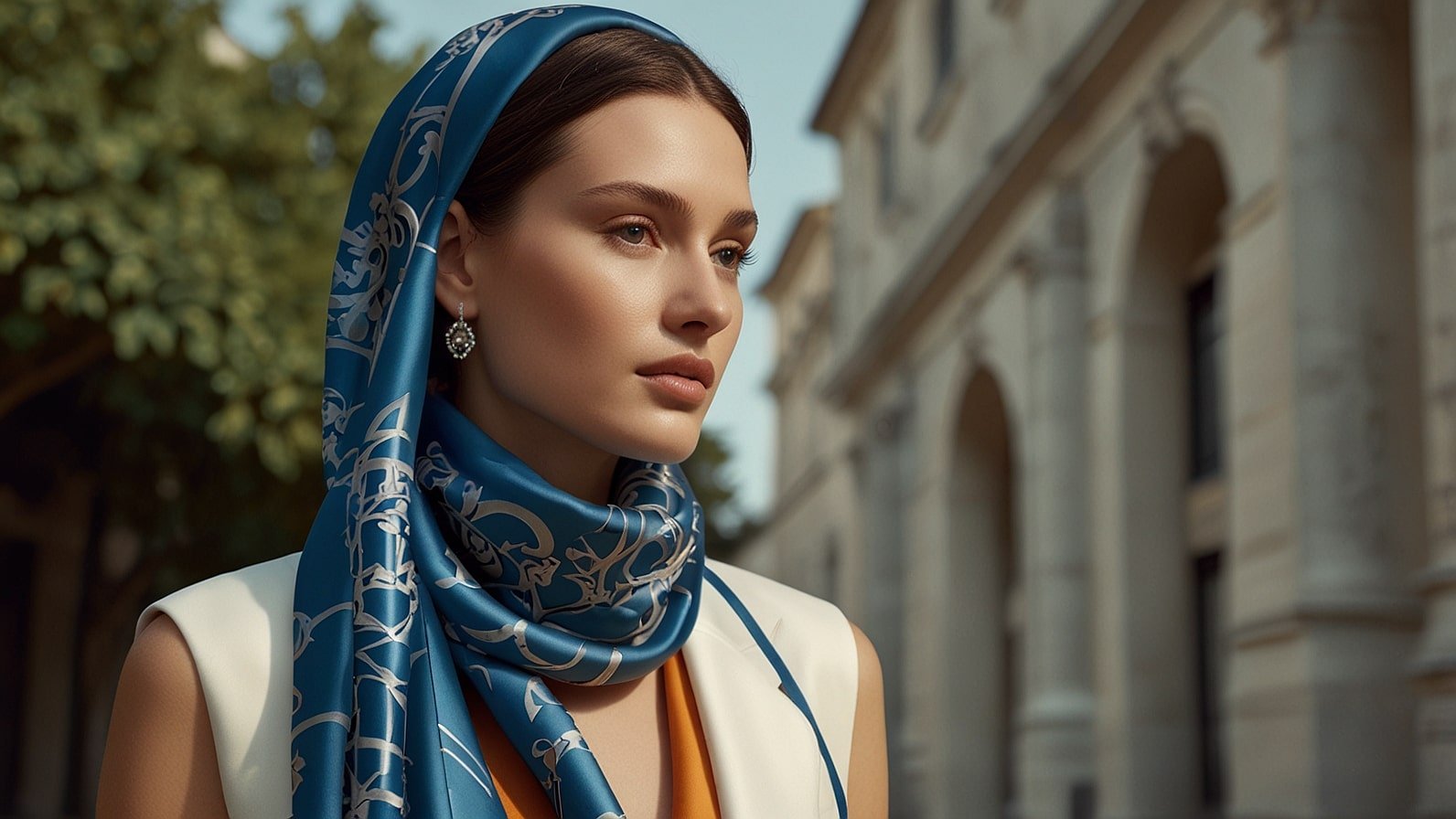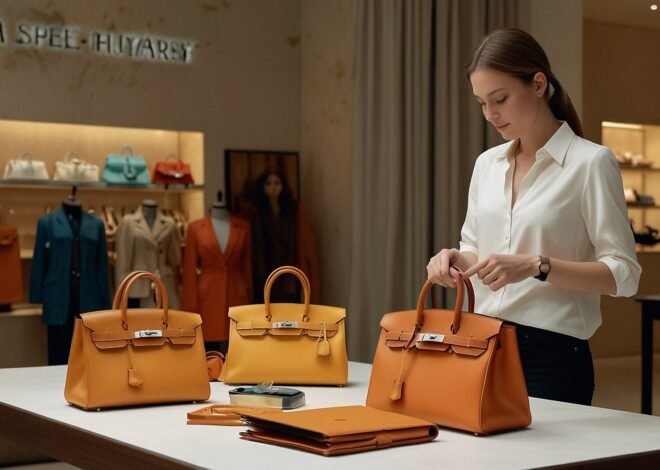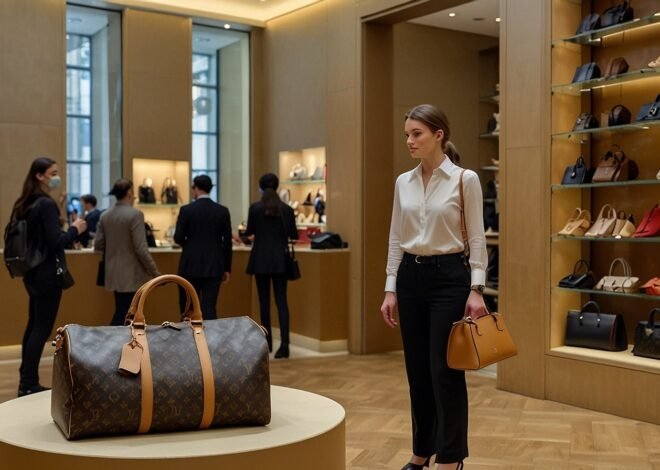
Hermès Redefines Luxury with AI-Woven Silk Collection for 2030
The France-based high-fashion developer Hermes, a company that built its entire reputation based on silk weaving, has recently decided to take a revolutionary step forward that can only be described as a remodeling of how technology and tradition work together. The product is a collection created with the help of artificial intelligence (AI) to create complex designs.
It constitutes an ambitious move on the part of a brand that specialises in timeless craftsmanship. With the growing emphasis on innovation and heritage among luxury consumers, the new venture positions Hermes as a leader in the evolving trends of high-end fashion, aligning with global sustainability and technological trends.
A Fusion of Artistry and Artificial Intelligence
Hermes has always been known for its handcrafted silk scarves, which require a lot of work to make. The 2030 line goes even further and introduces the idea of a revolutionary fabric production: AI looms that produce insights into nature, cosmology, and human sentiment.
These looms, designed in cooperation with one of the most renowned technology companies of Paris, utilize huge amounts of historical Hermes models, landscape pictures, and consumer tastes to produce distinctive, non-repeating designs. The end product is a line of scarves and clothing, harnessing the natural elegance of vintage silk and the tightness of high-tech fabrics.
The most striking piece of the collection would have to be a scarf called “Etoile Filante (Shooting Star) in which a cosmos spins in a galaxy of indigo and gold threads resembling a meteor shower in the middle of the night.
In comparison with traditional designs, where manual sketching would take months to develop a pattern, the AI system achieved this within days, allowing artisans to focus on mastering the weaving process. Hermes makes it clear that the collection is still closely connected with human skillfulness: master weavers are in charge of the whole process to guarantee such essential quality of the brand.
Sustainability Core Sustainability
Within the trend of the luxury business of going green, Hermes has incorporated sustainable materials in the 2030 line. Silk is procured by organic mulberry farms in Southeast Asia, which can be found among the low-impact spots.
The renewably-powered AI looms consume 30 per cent less water and energy than traditional techniques, which the Sustainable Fashion Institute reported. This sustainable promise is one that young consumers are keen on, especially Gen Z, who are far more interested in ethically manufactured goods, as reported by Bain & Company in its report about the luxury market up to 2024.
Hermes has equally committed to come clean, and they have got a comprehensive supply chain report on their site. Such a step responds to increased consumer action on responsibility, and is consistent with EU legislation, such as the Green Claim Directive, that demands followable claims of sustainability. With a rich history and its eco-friendly innovation focus, Hermes offers a new benchmark to be designated as a responsible luxury.
Exclusivity Redefined in the Digital World
The 2030 assortment does not only prove a successful performance of design but a rediscovery of exclusivity. Hermes will mint a limited series of digital twins to each of the physical scarves so the owners can display the objects in the virtual realm, such as the metaverse.
The company brand has taken its initial large step into Web 3, leveraging the $2 billion digital luxury market, which is expected to be realized in 2025, according to McKinsey & Company. NFTs come with a certificate of authenticity as well as special Hermes events, which add to their value as an ownership experience.
The physical assortment, which includes 500 scarves and 200 clothes, is to be launched on an appointment basis only at Paris, Tokyo, and New York stores. This scarcity, along with the digital aspect, will benefit high-net-worth individuals who want rare, tech-savvy investments. At the announcement, Hermes’ creative director V was quoted to have said, We are not selling a product, but we are curating an experience.
Industry Implications
The luxury industry is at a turning point with the introduction of the AI-woven collection by Hermes. As technology is adopted by such brands as Prada and Cartier, there is a shift towards hybrid models that fuse tradition and innovation in the industry.
This trend is evident in the recent coverage of Prada 2033 fashion, which incorporates technology, and Cartier 2037’s panther-themed jewelry by thehighchairsociety.com. The project by Hermes, however, can be distinguished by the consideration of two of the most critical factors, sustainability and digital exclusivity, as well as taking into account the current demands of the wealthy buyers.
The experts anticipate that the line will support the position of Hermes in the marketplace, particularly in Asia, where luxury spending is projected to increase by 4 percent in 2025, as per Bain. The possibilities of innovation that do not mean losing the heritage that the company has built might lead the competitors down the same path and may change the future course of luxury fashion.
Problems and Objections
Despite the momentum, Hermes faces challenges. Some old-fashioned people state that AI-based design threatens to impair the artisanal heritage of the brand.
There was one thread on X that is ambivalently typified with one user mentioning that Hermes scarves are just about human touch rather than about algorithms. Its brand overturns it, AI enriches craftsmanship, not replacing it, as 50 artisans were involved in the production of the collection.
Those features, coupled with the fact that the price started at 2,500 euros for a scarf, might drive off younger buyers, notwithstanding the sustainability niche. To remedy this, Hermes will deliver virtual-try-on options through its app and thus make the collection more accessible online.
Looking Ahead
The 2030 silk range highlights how Hermes managed to change over time and remain loyal to the spirit of what it started with. With these kinds of technologies (embracing AI, sustainability, and digital innovation), not only will the brand address the requirements of the new luxury, but it will create a roadmap of how it will be in the future. With this collection set to wow Paris next spring, it’s sure to be the envy of the fashion set, setting a new trend for what it means to be exclusive in 2030.


